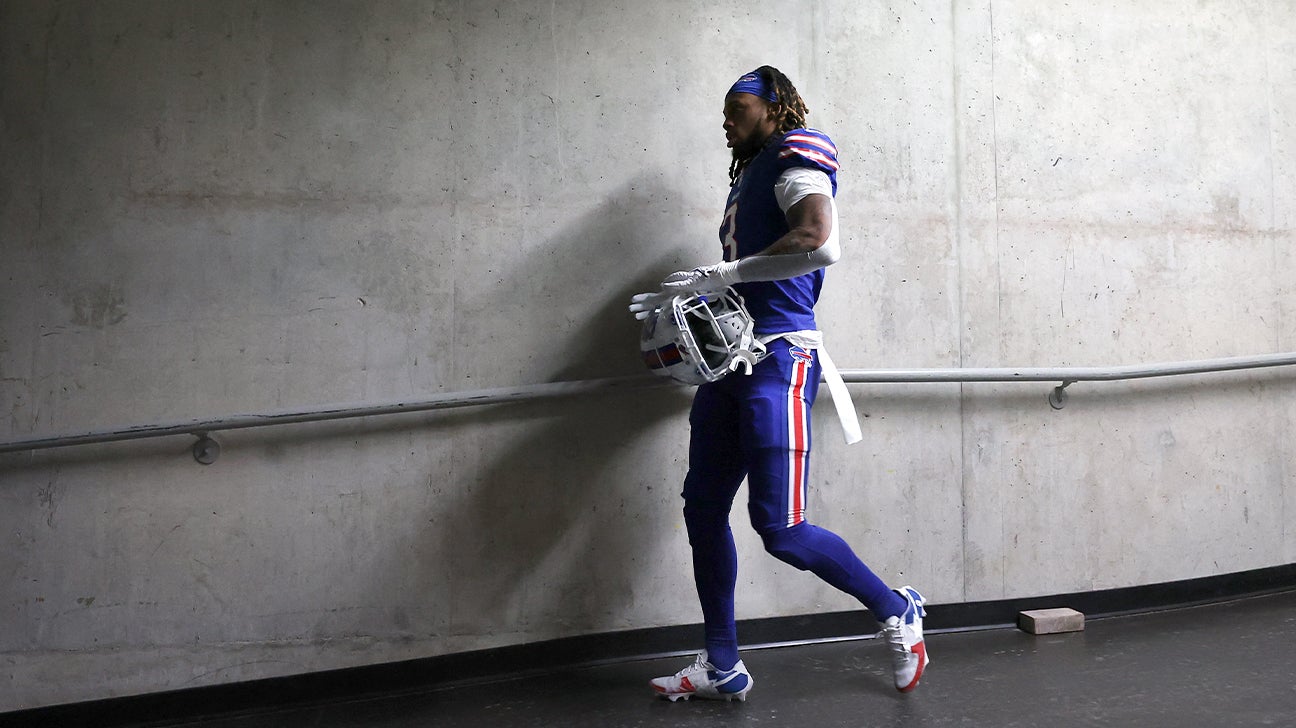
- The American Heart Association said that interest in CPR has spiked after NFL player Damar Hamlin suffered a cardiac arrest during a game.
- Team physicians and first aid responders used CPR to save Hamlin’s life.
- Hamlin is been showing progress according to his physicians and has been released to return to Buffalo, where he will be able to recover at a local hospital.
When Damar Hamlin of the Buffalo Bills collapsed from cardiac arrest on national television during an NFL game, millions of people around the world watched and waited to see if he was going to be ok.
The scene brought to light just how vital CPR and first aid care can be.
Hamlin has now been released from the hospital in Cincinnati and will continue his recovery in Buffalo, New York. But his traumatic event has inspired many to seek out CPR (cardio-pulmonary resuscitation) education and resources.
“Whether you’re a health professional or not, it’s important to feel somewhat comfortable with what to do in an emergency situation. We should all know how to do CPR and handle an AED (automated external defibrillator),” said Dr. Dennis A Cardone, orthopedic surgeon and chief of the division of primary care sports medicine at NYU Langone Health. “It’s such an easy thing and so important to save lives.”
According to the American Heart Association (AHA), following Hamlin’s televised collapse on January 2 prompted a 620% increase in page views to Hands-Only CPR content pages on its website. It also saw a 66% increase in web traffic to cpr.heart.org, which represents an additional 57,6000 people that week. There was a 145% increase in page views to the What is CPR page, as well as a 113% increase in page views to the CPR Course Catalog page.
What can you do if you’d like to learn more about CPR? We’ve consulted with experts, who have tips on key things to know about CPR.
What is CPR?
CPR is an emergency lifesaving procedure that is performed when the heart stops beating. Performing CPR immediately can double or triple the chances of survival after cardiac arrest, according to the American Heart Association.
“It only takes a few minutes for the brain to suffer permanent damage if it does not receive oxygen. The main goal of the bystander in CPR is to move blood inside the heart to the brain to supply it with some oxygen until emergency medical services arrive,” said Dr. Christopher Tanayan, director of sports cardiology at Lenox Hill Hospital.
When to Use CPR
CPR is to be used in an emergency situation when a person becomes unresponsive to verbal or tactile stimuli.
“If the patient is not responsive, then CPR is almost always the right thing to do,” said Cardone. “If someone’s unconscious state [can] be explained by trauma, like a head injury, that’s one of the few times you don’t start chest compressions. But if someone falls to the ground and is not breathing and not responding to stimuli, then that would be the time to start CPR.”
How to perform CPR
Before initiating CPR, check for a pulse and breathing for 10 seconds. Before initiating CPR, call 911 for help or ask someone to call for you.
There are two well-known methods of CPR. The first is for healthcare providers and those trained in CPR. This is called Conventional CPR and uses chest compressions and mouth-to-mouth breathing at a ratio of 30:2 compressions to breaths, according to the AHA. In adult victims, rescuers should perform chest compressions at a rate of 100 to 120 per minute, and to a depth of at least two inches for an average adult. Avoid chest compression depths greater than 2.4 inches.
For the general public (those who are not certified), they will use Hands-Only CPR, which is CPR without mouth-to-mouth breaths. Hands-Only CPR should be used by people who see a teen or adult suddenly collapse in an out-of-hospital setting.
“Don’t worry about causing pain or injury. Survival is the priority,” said Tanayan. “Yes, CPR should be performed at the same tempo as the disco song, “Stayin’ Alive,” advice given in an episode of ‘The Office.’ It is okay if you do not know how to perform mouth-to-mouth resuscitation. Just keep on pumping without interruption until help arrives.”
What is an AED?
An AED is an automated external defibrillator, which is a machine that replicates the process of CPR with a machine.
“AEDs are self-directing and won’t defibrillate without picking up the improper heart rhythm, or lack of heart rhythm. It’s really fool-proof. Once you put the paddles on the chest, it does all the work for you,” said Cardone.
Where to Learn More about CPR
To learn more about how to do CPR safely and properly, visit resources like the American Heart Association‘s guides. To become a certified administrator of CPR, you can sign up for the American Red Cross online training or use the AHA’s “Find a CPR Course” to find an in-person course in your area.
Cardone added, “[What happened with Hamlin] is a sad story with a happy ending. The one positive is that it raised so much awareness for CPR and defibrillators. It’s something we should all be comfortable with and all get training in.”
After Damar Hamlin’s Collapse, American Heart Association Sees Spike in CPR Searches
Source: Pinoy Lang Sakalam



0 (mga) komento:
Mag-post ng isang Komento